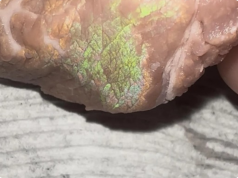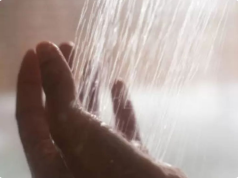Water retention, also known as edema, happens when excess fluid builds up in the body’s tissues. While it’s common to experience occasional water retention—especially before your period or after a salty meal—frequent or prolonged episodes can be uncomfortable and may point to an underlying health condition. Knowing what causes fluid buildup and how to manage it is essential for feeling your best and supporting long-term wellness.
What Causes Water Retention?
Several everyday factors and medical conditions can contribute to water retention. The most common causes include:
1. High Sodium Intake
Consuming too much salt is one of the leading triggers. When sodium levels rise in the bloodstream, the body holds onto water to maintain balance. This often results in puffiness and swelling, particularly in the hands, feet, and ankles.
2. Hormonal Changes
Women are especially prone to water retention during menstruation, pregnancy, or menopause due to natural shifts in estrogen and progesterone. These hormones influence kidney function and fluid regulation, which can lead to temporary bloating and weight fluctuations.
3. Physical Inactivity
Remaining seated or standing for extended periods slows circulation, making it harder for fluids to return from the legs to the heart. This can cause fluid to accumulate in the lower limbs, leading to heaviness and swelling.
4. Medications
Certain drugs—including some blood pressure medications, diabetes treatments, and hormonal contraceptives—can cause fluid retention as a side effect. If you notice new or worsening swelling after starting a medication, consult your healthcare provider.
5. Underlying Health Conditions
Chronic issues such as heart failure, kidney disease, or liver cirrhosis can impair the body’s ability to regulate fluids properly. In these cases, persistent edema is often a symptom of the condition and requires medical management.
Recognizing the Signs of Water Retention
Symptoms vary depending on severity and cause, but common indicators include:
1. Swelling in the Extremities
Puffiness in the hands, feet, ankles, or legs is the most visible sign. It often worsens by the end of the day or after sitting/standing for long periods.
2. Stiffness and Discomfort
Affected areas may feel tight, heavy, or stiff. Movement can become uncomfortable, and the skin might appear stretched or shiny.
3. Pitting Edema
In more serious cases, pressing on the swollen area leaves a temporary indentation—a telltale sign called pitting edema. This suggests significant fluid accumulation and may require medical evaluation.
4. Sudden Weight Fluctuations
Rapid weight gain over a short time (like overnight) is often due to retained fluid rather than fat. This type of change tends to come and go quickly, unlike gradual fat gain.
How to Manage and Reduce Water Retention
The best approach combines lifestyle adjustments with targeted strategies to support healthy fluid balance:
1. Cut Back on Salt
Reducing sodium intake is one of the most effective ways to combat water retention. Avoid processed foods, canned soups, and fast food, which are high in hidden salt. Focus on fresh fruits, vegetables, lean proteins, and whole grains instead.
2. Drink More Water
It may seem surprising, but staying well-hydrated helps your body release excess fluid. When dehydrated, your system holds onto water. Aim for 6–8 glasses of water daily, more if you’re active or in hot weather.
3. Stay Active
Regular movement supports circulation and prevents fluid pooling. Walking, swimming, cycling, or even gentle stretching can make a big difference—especially if you spend long hours sitting.
4. Elevate Your Legs
If your feet or legs swell, raise them above heart level for 15–20 minutes several times a day. This helps gravity move fluid back toward the core and reduces swelling.
5. Try Natural Diuretics
Certain foods and herbs encourage the kidneys to flush out extra water. Cucumber, watermelon, celery, parsley, and dandelion root are all mild natural diuretics that support fluid balance.
6. Wear Compression Stockings
These snug-fitting socks apply gentle pressure to improve blood flow and prevent fluid buildup in the legs. They’re especially helpful for people who sit or stand for long periods, including travelers and office workers.
When to See a Doctor
While mild water retention is usually harmless and resolves on its own, persistent or severe swelling should not be ignored. Seek medical advice if you experience:
- Swelling that doesn’t improve with lifestyle changes
- Shortness of breath or chest pain (could signal heart or lung problems)
- Severe swelling in just one leg (a possible sign of a blood clot)
- Swelling accompanied by fatigue, confusion, or reduced urination
Your doctor may recommend tests to check heart, kidney, or liver function and may prescribe diuretics (“water pills”) to help eliminate excess fluid safely.
Water retention is more than just a cosmetic concern—it’s your body’s way of signaling imbalance. By understanding the causes and taking proactive steps like reducing salt, staying hydrated, and moving regularly, you can support your body’s natural rhythm and feel lighter, more comfortable, and healthier overall. When in doubt, always consult a healthcare professional to rule out serious conditions and get personalized guidance.










